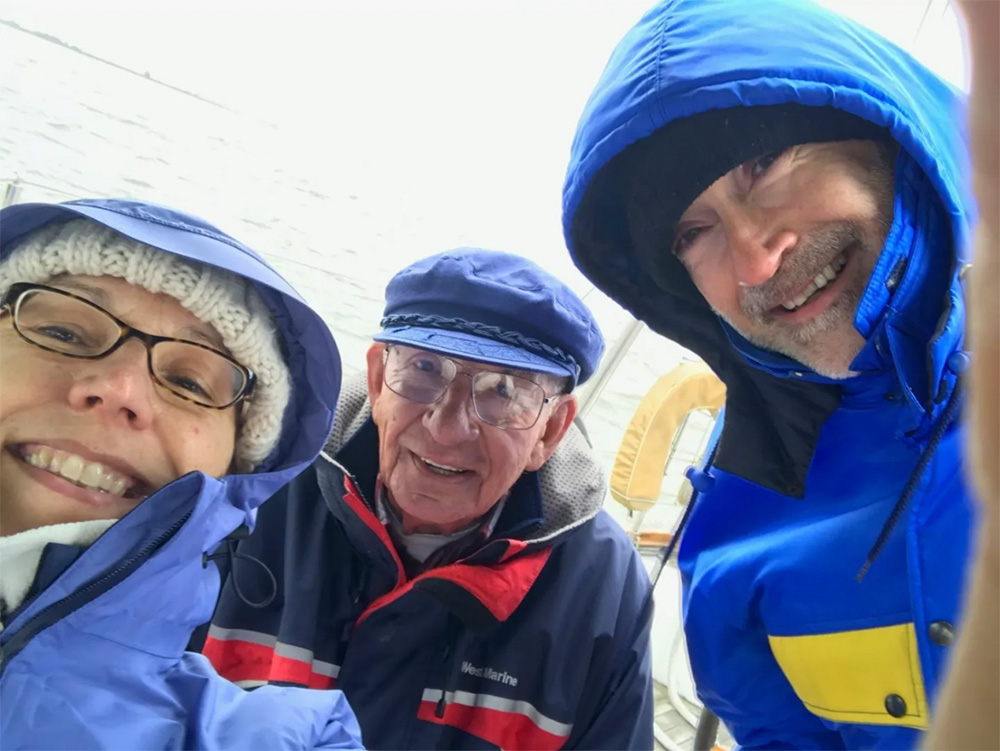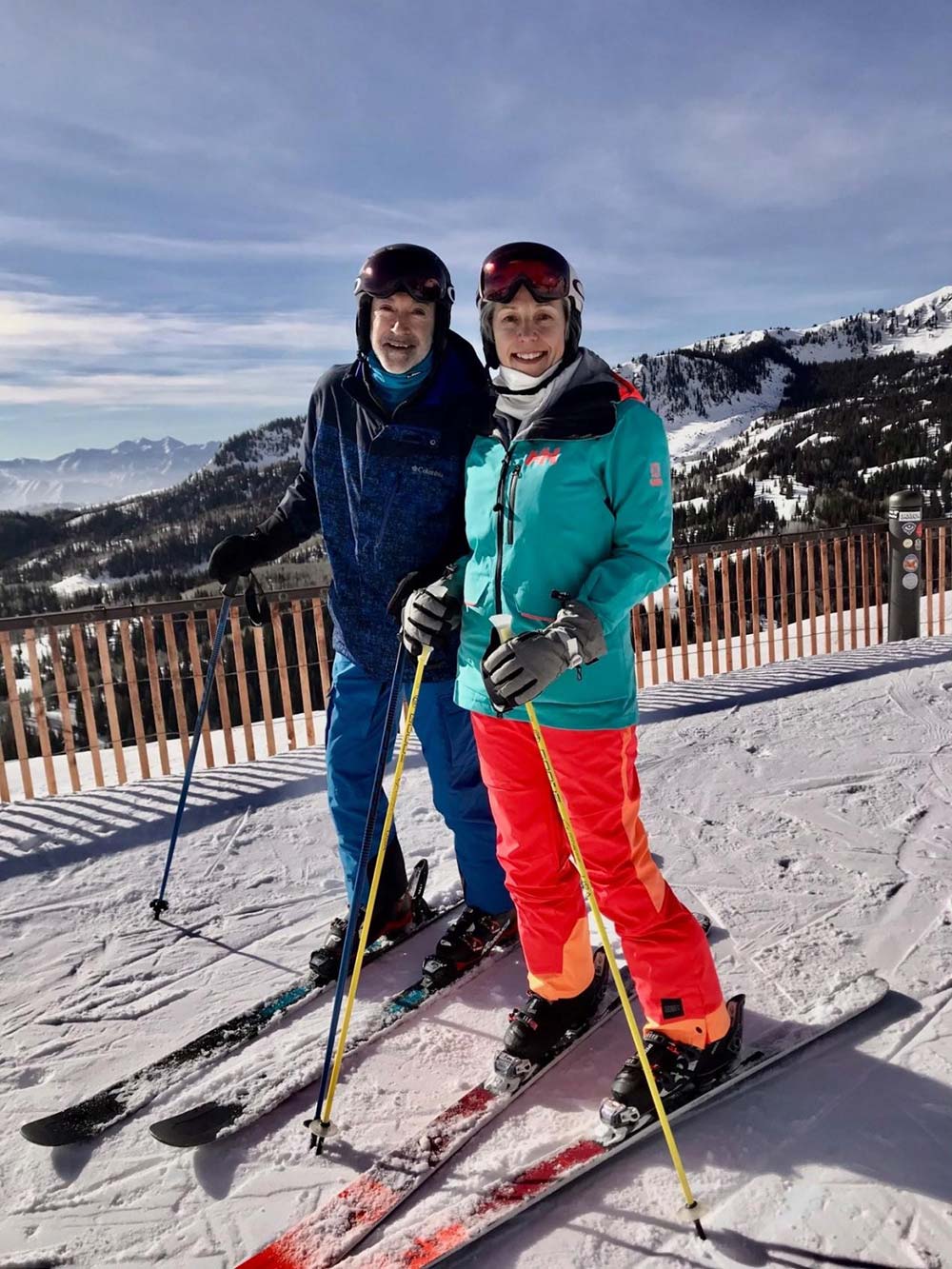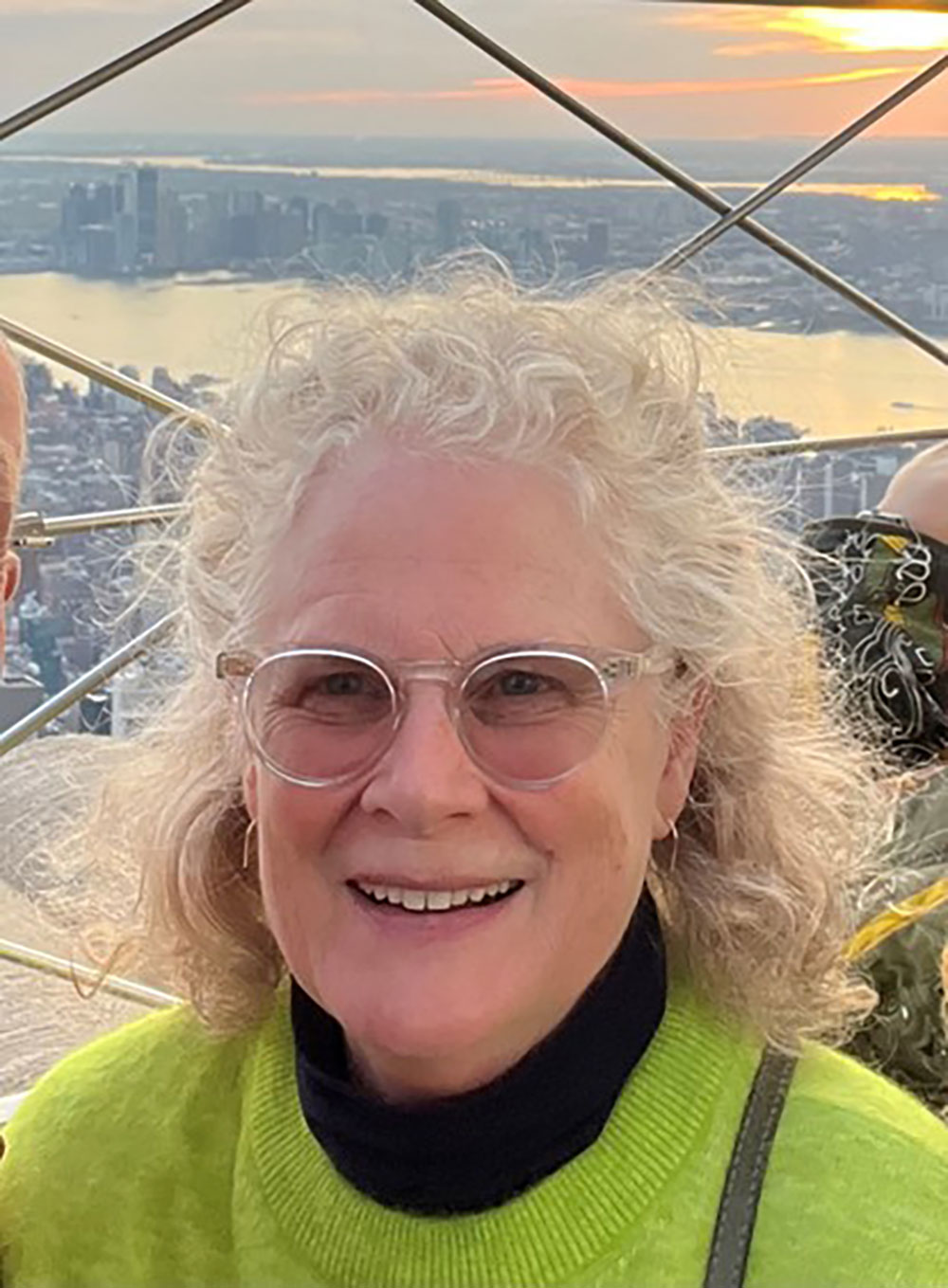
退休是许多美国人焦虑的来源,年长的上班族担心他们还没有做好准备就被迫离开职场,而年轻的上班族根本不相信自己能够负担退休生活。但许多受过大学教育的婴儿潮一代正在打破陈规,按自己的意愿重新定义以什么方式和在什么时候退休,这种趋势可能对未来职场产生重大影响。
当然,美国人的工作和退休方式不能一概而论。有些人能够在65岁的时候退休,然后去旅游和追求业余爱好,无需担心财务状况,但许多人却根本无法完全退休。有些人希望或者需要继续工作,却被雇主劝退,有些人的目标却是在五十几岁甚至更早退休,尽快离开传统工作。
阶段性退休是一种不同的方式,而且一些报告认为,这可能是一种日益流行的趋势。阶段性退休并不是突然退休,即在公司工作了40年后,第二天立刻离开公司,相反,上班族可以选择逐渐减少工作时间和减轻压力,同时还能继续赚取收入和保持人际关系。支持者们认为,这种方式不仅能够帮助员工从心理和财务上完成向退休的过渡,也对雇主有益。
Principal公司退休与收入解决方案总裁克里斯·利特菲尔德之前曾对《财富》杂志表示:“公司都面临招聘和留住人才的难题,因此公司必须努力留住现有的人才——这样做更有效、更高效且更有成效。这是职场的大趋势。在未来十年,这将成为公司可以利用的一个极其重要的工具。”
阶段性退休在实践中如何执行?三位接近或已经过了传统退休年龄的婴儿潮一代,向《财富》杂志讲述了他们理想中的阶段性退休计划。
“你能在沙滩上躺多久?”

姓名:乔治·卡维登
年龄:73岁
地点:新罕布什尔州
乔治·卡维登在零售业工作了数十年,他在五十多岁的时候卖掉自己的公司后退休,这是许多上班族的梦想。但卡维登很快发现,他并不适应提前退休的生活,他怀念那些白天有地方(而不是高尔夫球场)可去的日子。于是,他后来重回职场,在一家小型营销公司找到了一份新工作。他在这家公司工作了18年,并没有在近期内退休的打算。
卡维登说道:“我正在尝试减少工作时间。在73岁的年纪,我的精力已经大不如前。但我喜欢我的工作,我喜欢到公司和同事们一起工作。我喜欢社交。”
对于卡维登而言,他现在的工作安排是理想的。他不必待在家里,但又能灵活安排自己的办公时间。他在零售业的第一份职业中从来没有享受过这种灵活性。他表示,因为他从事的是销售岗位,要与客户见面,因此他能保持思维敏捷,而且与更年轻的同事交流,让他可以了解本来可能错过的最新趋势和视角。
卡维登承认其工作方式不适合所有人。他有许多朋友已经退休,并搬到了气候更温和、休闲活动更多的佛罗里达等州。但他表示,不管好坏,他的身份认同有一部分与他的工作密切相关。最终他的工作时间会从每周五天缩减到每周三天,但他现在还没有这样做。而且有收入并不是坏事。
他说道:“退休对我来说是一件可怕的事情。你能在沙滩上躺多久?为了我的身心健康,我喜欢保持活跃,继续工作。”
“我将完全掌控自己的时间。”

姓名:蕾妮·斯坦顿
年龄:61岁
地点:新泽西州
阶段性退休是蕾妮·斯坦顿的目标,她的整个职业生涯都在从事IT相关工作。她不打算彻底离开劳动力队伍,但她希望能够灵活办公,让自己可以在旺季去滑雪和航行(这两项运动是她的毕生挚爱),还能陪伴已经成年的孩子和衰老的父母。斯坦顿自称是一位“沮丧的艺术家”,她预计将在父亲的艺术工作室里度过更多下午时光。
61岁的斯坦顿表示:“消磨时间对我来说不成问题,我的问题是找到时间去做我想做的所有事情。有人说你必须要有退休目标。我的退休目标是……他们能为80岁及以上的滑雪爱好者提供前排停车位。我的目标是能够在那里停车。”
虽然她已经有足够的资金和热情支持她现在退休,但斯坦顿表示,作为家具木匠的父亲在六十多岁时退休的经历,给她带来了教训。她的父亲今年87岁,而且身体健康,他认为自己过早离开了劳动力队伍,如果继续工作更长时间,就能获得更多财务收益。她到父亲现在的年纪还有几十年时间,因此她在财务上“非常谨慎”。
她计划大幅减少工作时间,并从事承包商岗位,这让她可以根据自己的情况工作和休假。她说道:“我将完全掌控自己的时间。”她的退休金和社会保障金会继续增长,而且由于她还要再过几年才能享受到医疗保险(Medicare)计划,因此她需要赚足够的钱支付医疗保险和滑雪通票的价格。
斯坦顿说道:“我是时候退后一步,规划更多享受生活的时间。我依旧希望工作,赚取一些收入。虽然我的储蓄支持退休,却不能支持滑雪成瘾的退休生活。”
“我不会在某一天彻底停止工作。”

姓名:乔伊·W
年龄:66岁
地点:纽约州
乔伊·W在50岁时取得了心理学硕士学位。她要求不透露自己的姓氏,以便于自由讨论她的职业规划。现年66岁的乔伊长期从事人力资源工作。她决定从事一份更符合帮助他人这一愿望的副业。心理学硕士学位点燃了她内心的火焰。几年后,她又取得了社会工作硕士学位。她现在是康涅狄格州乡村地区的一名全职心理治疗师,客户的年龄从25岁到95岁,但许多人都已经退休。
这份工作让乔伊意识到,她并不想彻底停止工作,尽管她和丈夫衣食无忧,而且自己也过了传统退休年龄。但她开始减少工作量,从每周工作五天改为四天。
乔伊说道:“每次考虑结束自己的职业生涯时,我会设想利用自己的技能,从事一些志愿者工作。我不会在某一天彻底停止工作。我会继续做一些事情。这很有趣,能激发我的灵感,而且我的工作有巨大的需求。”
她的客户也影响了她继续工作的决定。她说,她的许多客户都对退休有些后悔,后悔的原因通常都是太早退休。与他们的交流验证了她“以曲折的路线实现阶段性退休”的想法。
她说道:“他们没有准备好迎接退休后第一天醒来的感受。他们不知道如何度过退休生活,这让他们感到意外。”
她的许多家庭成员,包括父亲和几位兄弟姐妹,都是被公司“强制退休”,这也影响了她对待工作的态度。乔伊希望能自主选择,而且她表示,转行的一个好处是她“从最开始就掌握了主动权”。她当前的雇主一开始就知道她不打算长期全职工作。雇主对她的加盟很高兴。
她说道:“这种感觉非常自由。至少在我看来,它降低了我的焦虑程度,而且可能也让他们不再感到焦虑。我们都知道彼此的立场。”
您的退休预算是多少?《财富》杂志正在调查不同收入水平的美国人的退休支出情况。欢迎发送电子邮件至alicia.adamczyk@fortune.com,联系资深撰稿人艾丽西亚·亚当奇克,分享您的故事。(财富中文网)
翻译:刘进龙
审校:汪皓
(从左到右)蕾妮·斯坦顿和父亲比尔·艾米奈克尔,以及丈夫特雷·斯劳。
退休是许多美国人焦虑的来源,年长的上班族担心他们还没有做好准备就被迫离开职场,而年轻的上班族根本不相信自己能够负担退休生活。但许多受过大学教育的婴儿潮一代正在打破陈规,按自己的意愿重新定义以什么方式和在什么时候退休,这种趋势可能对未来职场产生重大影响。
当然,美国人的工作和退休方式不能一概而论。有些人能够在65岁的时候退休,然后去旅游和追求业余爱好,无需担心财务状况,但许多人却根本无法完全退休。有些人希望或者需要继续工作,却被雇主劝退,有些人的目标却是在五十几岁甚至更早退休,尽快离开传统工作。
阶段性退休是一种不同的方式,而且一些报告认为,这可能是一种日益流行的趋势。阶段性退休并不是突然退休,即在公司工作了40年后,第二天立刻离开公司,相反,上班族可以选择逐渐减少工作时间和减轻压力,同时还能继续赚取收入和保持人际关系。支持者们认为,这种方式不仅能够帮助员工从心理和财务上完成向退休的过渡,也对雇主有益。
Principal公司退休与收入解决方案总裁克里斯·利特菲尔德之前曾对《财富》杂志表示:“公司都面临招聘和留住人才的难题,因此公司必须努力留住现有的人才——这样做更有效、更高效且更有成效。这是职场的大趋势。在未来十年,这将成为公司可以利用的一个极其重要的工具。”
阶段性退休在实践中如何执行?三位接近或已经过了传统退休年龄的婴儿潮一代,向《财富》杂志讲述了他们理想中的阶段性退休计划。
“你能在沙滩上躺多久?”
乔治·卡维登和他的爱犬Lily。
姓名:乔治·卡维登
年龄:73岁
地点:新罕布什尔州
乔治·卡维登在零售业工作了数十年,他在五十多岁的时候卖掉自己的公司后退休,这是许多上班族的梦想。但卡维登很快发现,他并不适应提前退休的生活,他怀念那些白天有地方(而不是高尔夫球场)可去的日子。于是,他后来重回职场,在一家小型营销公司找到了一份新工作。他在这家公司工作了18年,并没有在近期内退休的打算。
卡维登说道:“我正在尝试减少工作时间。在73岁的年纪,我的精力已经大不如前。但我喜欢我的工作,我喜欢到公司和同事们一起工作。我喜欢社交。”
对于卡维登而言,他现在的工作安排是理想的。他不必待在家里,但又能灵活安排自己的办公时间。他在零售业的第一份职业中从来没有享受过这种灵活性。他表示,因为他从事的是销售岗位,要与客户见面,因此他能保持思维敏捷,而且与更年轻的同事交流,让他可以了解本来可能错过的最新趋势和视角。
卡维登承认其工作方式不适合所有人。他有许多朋友已经退休,并搬到了气候更温和、休闲活动更多的佛罗里达等州。但他表示,不管好坏,他的身份认同有一部分与他的工作密切相关。最终他的工作时间会从每周五天缩减到每周三天,但他现在还没有这样做。而且有收入并不是坏事。
他说道:“退休对我来说是一件可怕的事情。你能在沙滩上躺多久?为了我的身心健康,我喜欢保持活跃,继续工作。”
“我将完全掌控自己的时间。”
蕾妮·斯坦顿和丈夫特雷·斯劳热爱滑雪。
姓名:蕾妮·斯坦顿
年龄:61岁
地点:新泽西州
阶段性退休是蕾妮·斯坦顿的目标,她的整个职业生涯都在从事IT相关工作。她不打算彻底离开劳动力队伍,但她希望能够灵活办公,让自己可以在旺季去滑雪和航行(这两项运动是她的毕生挚爱),还能陪伴已经成年的孩子和衰老的父母。斯坦顿自称是一位“沮丧的艺术家”,她预计将在父亲的艺术工作室里度过更多下午时光。
61岁的斯坦顿表示:“消磨时间对我来说不成问题,我的问题是找到时间去做我想做的所有事情。有人说你必须要有退休目标。我的退休目标是……他们能为80岁及以上的滑雪爱好者提供前排停车位。我的目标是能够在那里停车。”
虽然她已经有足够的资金和热情支持她现在退休,但斯坦顿表示,作为家具木匠的父亲在六十多岁时退休的经历,给她带来了教训。她的父亲今年87岁,而且身体健康,他认为自己过早离开了劳动力队伍,如果继续工作更长时间,就能获得更多财务收益。她到父亲现在的年纪还有几十年时间,因此她在财务上“非常谨慎”。
她计划大幅减少工作时间,并从事承包商岗位,这让她可以根据自己的情况工作和休假。她说道:“我将完全掌控自己的时间。”她的退休金和社会保障金会继续增长,而且由于她还要再过几年才能享受到医疗保险(Medicare)计划,因此她需要赚足够的钱支付医疗保险和滑雪通票的价格。
斯坦顿说道:“我是时候退后一步,规划更多享受生活的时间。我依旧希望工作,赚取一些收入。虽然我的储蓄支持退休,却不能支持滑雪成瘾的退休生活。”
“我不会在某一天彻底停止工作。”
66岁的乔伊在50多岁的时候开创了一份新事业。她没有在短期内退休的计划。
姓名:乔伊·W
年龄:66岁
地点:纽约州
乔伊·W在50岁时取得了心理学硕士学位。她要求不透露自己的姓氏,以便于自由讨论她的职业规划。现年66岁的乔伊长期从事人力资源工作。她决定从事一份更符合帮助他人这一愿望的副业。心理学硕士学位点燃了她内心的火焰。几年后,她又取得了社会工作硕士学位。她现在是康涅狄格州乡村地区的一名全职心理治疗师,客户的年龄从25岁到95岁,但许多人都已经退休。
这份工作让乔伊意识到,她并不想彻底停止工作,尽管她和丈夫衣食无忧,而且自己也过了传统退休年龄。但她开始减少工作量,从每周工作五天改为四天。
乔伊说道:“每次考虑结束自己的职业生涯时,我会设想利用自己的技能,从事一些志愿者工作。我不会在某一天彻底停止工作。我会继续做一些事情。这很有趣,能激发我的灵感,而且我的工作有巨大的需求。”
她的客户也影响了她继续工作的决定。她说,她的许多客户都对退休有些后悔,后悔的原因通常都是太早退休。与他们的交流验证了她“以曲折的路线实现阶段性退休”的想法。
她说道:“他们没有准备好迎接退休后第一天醒来的感受。他们不知道如何度过退休生活,这让他们感到意外。”
她的许多家庭成员,包括父亲和几位兄弟姐妹,都是被公司“强制退休”,这也影响了她对待工作的态度。乔伊希望能自主选择,而且她表示,转行的一个好处是她“从最开始就掌握了主动权”。她当前的雇主一开始就知道她不打算长期全职工作。雇主对她的加盟很高兴。
她说道:“这种感觉非常自由。至少在我看来,它降低了我的焦虑程度,而且可能也让他们不再感到焦虑。我们都知道彼此的立场。”
您的退休预算是多少?《财富》杂志正在调查不同收入水平的美国人的退休支出情况。欢迎发送电子邮件至alicia.adamczyk@fortune.com,联系资深撰稿人艾丽西亚·亚当奇克,分享您的故事。(财富中文网)
翻译:刘进龙
审校:汪皓
(L-R) Renee Stanton with her father, Bill Emenecker, and husband, Trey Slough.
COURTESY OF RENEE STANTON
Retirement is a source of anxiety for many Americans, with older employees worried about being forced out of work before they are ready and younger generations less than convinced they will be able to afford to retire at all. But many college-educated baby boomers are flipping the script and redefining how and when they retire on their own terms, a trend that could have significant effects on the workplace for years to come.
Of course, there’s no single approach to work and retirement in the U.S.—while some are able to exit the workforce at 65 to travel and pursue hobbies without worrying about their finances, many others are never able to fully retire at all. Others who want or need to continue working are pushed out by employers, while some are set on leaving the traditional work world as soon as possible, with the goal to quit in their 50s, or even earlier.
Phased retirement is different still, and, according to some reports, could be a growing trend. Rather than a hard-stop retirement—here for 40 years, gone tomorrow—workers are given the option to gradually pare back hours and reduce stress while still earning income and maintaining connections. Proponents say it not only helps employees with the transition to retirement, both mentally and financially, but that it also benefits employers.
“Businesses are all struggling with recruiting and retaining talent, so you have to keep the talent you have—that’s a lot more effective, efficient, and productive,” Chris Littlefield, president of retirement and income solutions at Principal, previously told Fortune. “It’s a mega-trend in the workforce. It will be a very significant lever for them over the next decade.”
How does that work in practice? Here’s what three baby boomers approaching or past the traditional retirement age told Fortune about their ideal phased exit.
‘How much can you lay on the beach?’
George Cavedon, with his dog, Lily.
COURTESY OF GEORGE CAVEDON
Name: George Cavedon
Age: 73
Location: New Hampshire
After a decades-long career working in retail, George Cavedon retired in his fifties after his company was sold, a dream for many workers. But Cavedon soon found the early retirement life wasn’t for him; he missed having somewhere to go during the day that wasn’t a golf course, and Eventually, he joined the ranks of the unretired, and found a new job working at a small marketing firm. He’s been there for 18 years, with no intention of slowing down anytime soon.
“I’m trying to cut back. Being 73, my energy isn’t what it used to be,” Cavedon says. “But I enjoy what I do, I enjoy coming in and working with people. I’m a social kind of guy.”
For Cavedon, his current working arrangement is ideal. He gets out of the house but has some flexibility with his hours—something he was never allowed in his first career in retail. Because he works in sales and meets with clients in person, his mind stays sharp, he says, and talking with younger coworkers keeps him up-to-date on trends and perspectives he’d otherwise miss.
Cavedon recognizes his approach to work isn’t for everyone. He has plenty of friends who have retired and moved to states like Florida with warmer weather and more leisure activities. But for better or worse, he says part of his identity is tied up in his work. Eventually he’ll scale back to working three days a week rather than five, but not yet. And the money doesn’t hurt, either.
“Retirement to me is a scary thing. How much can you lay on the beach?” he says. “For my own personal mental health and well-being, I like being active and working.”
‘I’ll be in full control’
Renee Stanton and her husband, Trey Slough, love to ski.
COURTESY OF RENEE STANTON
Name: Renee Stanton
Age: 61
Location: New Jersey
Phased retirement is the goal for Renee Stanton, who has worked in IT-adjacent roles her entire career. She has no desire to leave the workforce completely but would appreciate the flexibility to go skiing and sailing—her lifelong passions—during the on-seasons, and to spend more time with her adult children and aging parents. A self-described “frustrated artist,” Stanton also foresees wiling away more afternoons in her dad’s art studio.
“It’s not a problem for me to fill my time—the problem for me is to find the time for all the things I want to do,” says Stanton, 61. “They say you have to have retirement goals. My retirement goal is…they have front-row parking for skiers 80 and above. My goal is to be parking there.”
Though she has enough money—and passions—to retire now, Stanton says she learned a lesson when her father, a cabinetmaker, retired in his sixties. Now 87 and going strong, he believes he left the workforce too early and could have benefitted financially from staying employed longer. With potentially decades ahead of her, she is being “extra cautious” with her finances.
She plans to reduce her hours significantly and move to a contractor role, so she can work when she wants to and take time off on her own terms. “I’ll be in full control,” she says. That will allow her pensions and Social Security payments to continue to grow, and because she still has a few years until Medicare coverage kicks in, she’ll need to earn enough to pay for her health insurance—and her ski passes.
“It’s time for me to take a step back and plan more time for fun,” says Stanton. “I still want to work and bring some money in. I saved for retirement, but not ski-addiction retirement.”
‘I won’t just drop out 100% one day’
Joy, 66, started a new career in her 50s. She doesn’t plan to retire anytime soon.
Name: Joy W.
Age: 66
Location: New York
At 50, Joy W., who asked that her last name be withheld to freely discuss her career plans, completed a master’s degree in psychology. A long-time human resources worker, Joy, now 66, decided to pursue a second act that better aligned with her desire to help people. That first degree lit a match, and a few years later, she also completed a master’s in social work. She now works as a full-time psychotherapist in rural Connecticut, with clients ranging in age from 25 to 95, but many who are post-retirement.
Through her work, Joy has realized she has no desire to stop working completely, though she and her husband are financially secure and she’s past the traditional retirement age. But she is beginning to scale back, working four days a week instead of five.
“When I think about ending my career, I imagine I’ll be doing some sort of volunteer work that takes advantage of my skills,” says Joy. “I won’t just drop out 100% one day. I’ll be doing something. It’s interesting, it’s stimulating for me, and there’s a huge need for it.”
Her clients also have influenced her choice to keep working. Many of them have some form of regret about retiring, she says, and it’s usually because they did so too soon. Talking with them validates her “zigging-zagging path toward phased retirement.”
“They weren’t ready for how they felt the day they woke up after retirement,” she says. “They didn’t know how to do retirement, and that took them by surprise.”
Many family members, including her father and some siblings, were “retired” by their companies, which also informs her approach to work. She wants to make the choice for herself, and one benefit of switching careers when she did, Joy says, is that she’s “been in the driver’s seat since the beginning.” Her current employer knew from the jump that she didn’t plan to work full time for long. They’re just happy to have her while they do.
“That felt really liberating,” she says. “It really lowered the anxiety level, at least mine, and probably theirs too. We each knew where the other stood.”
What is your retirement budget? Fortune is writing about what Americans at different income levels are spending in retirement. To share your story, email senior writer Alicia Adamczyk at alicia.adamczyk@fortune.com.






